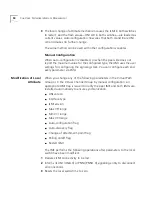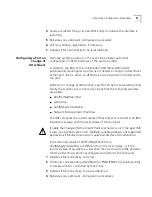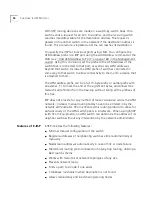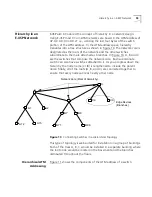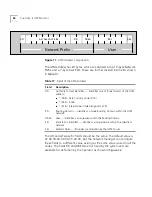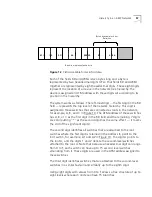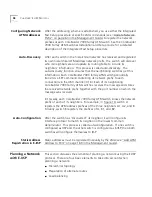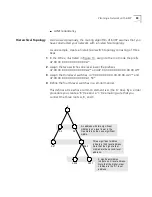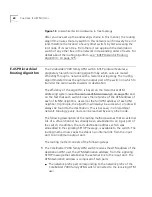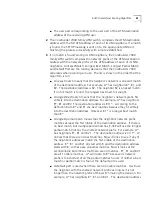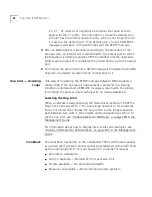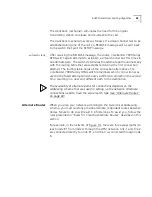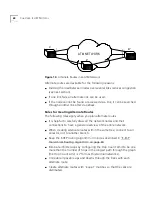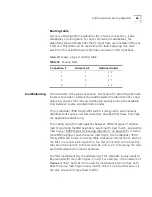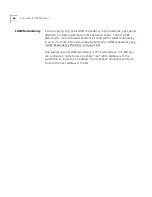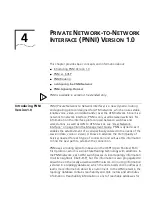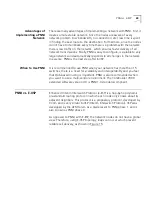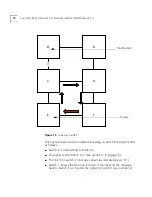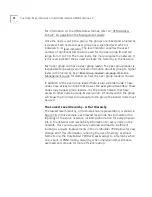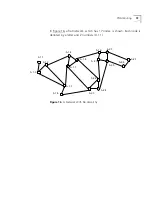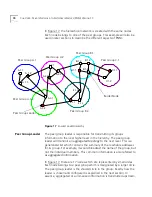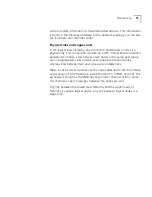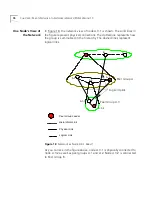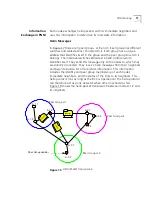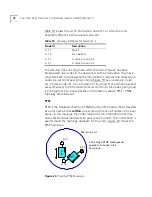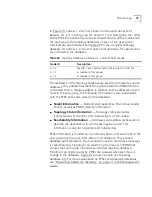
64
C
HAPTER
3: E-IISP P
ROTOCOL
Figure 14
Alternate Routes in an ATM Network
Alternate routes are desirable for the following reasons:
Dividing the load between nodes over several links reduces congestion
(see next section)
If one link fails, an alternate link can be used.
If the node cannot be found or accessed via a link, it can be searched
through another link after
crankback.
Rules for Creating Alternate Routes
The following rules apply when you plan alternate routes:
It is helpful to carefully draw all the network nodes and their
connections to have a general overview of the entire network.
When creating alternate routes within the same tree, connect to an
ancestor, not to another branch.
Keep the E-IISP routing algorithm in mind as described in “E-IISP
Hierarchical Routing Algorithm” on page 60.
Eliminate infinite loops by configuring the Hop Count Limit to be one
more than the number of hops in the longest path through the graph
(the Hop Count Limit is 7 for most hierarchial networks).
Consider all possible ups and downs through the trees with each
alternate route.
Create alternate routes with “equal” matches so that the calls are
distributed.
ATM NETWORK
B1*
A*
B*
1
2
3
1
2
3
Summary of Contents for CoreBuilder 7000
Page 12: ......
Page 30: ...30 CHAPTER 1 ATM NETWORK BASICS...
Page 32: ...32 CHAPTER 1 ATM NETWORK BASICS...
Page 34: ...34 CHAPTER 1 ATM NETWORK BASICS Figure 8 LANE Network over WAN...
Page 96: ...96 CHAPTER 4 PRIVATE NETWORK TO NETWORK INTERFACE PNNI VERSION 1 0...
Page 184: ...184 CHAPTER 7 LAN EMULATION VERSIONS 1 0 AND 2 0...
Page 206: ...206 CHAPTER 9 DEVICE MANAGEMENT...
Page 222: ...222 APPENDIX A TECHNICAL SUPPORT...
Page 234: ...234 APPENDIX B PROTOCOLS AND INTERFACES...
Page 238: ...238 APPENDIX C COREBUILDER 7000 FAMILY ATM SWITCH SPECIFICATIONS...
Page 242: ...242 APPENDIX D SAFETY INFORMATION...

